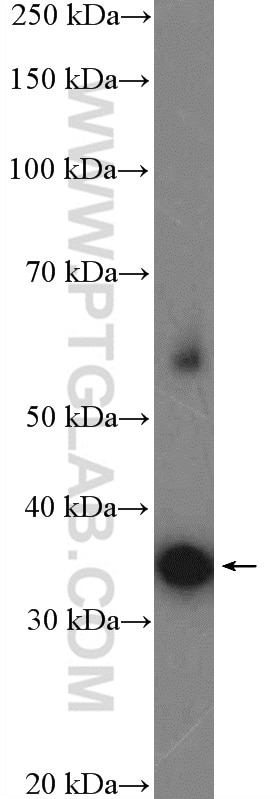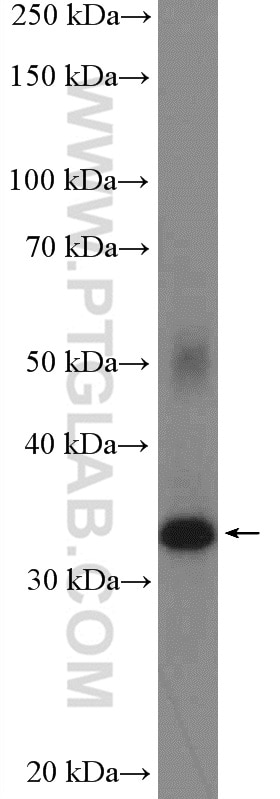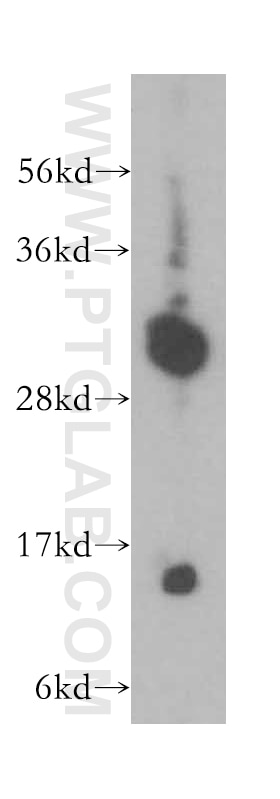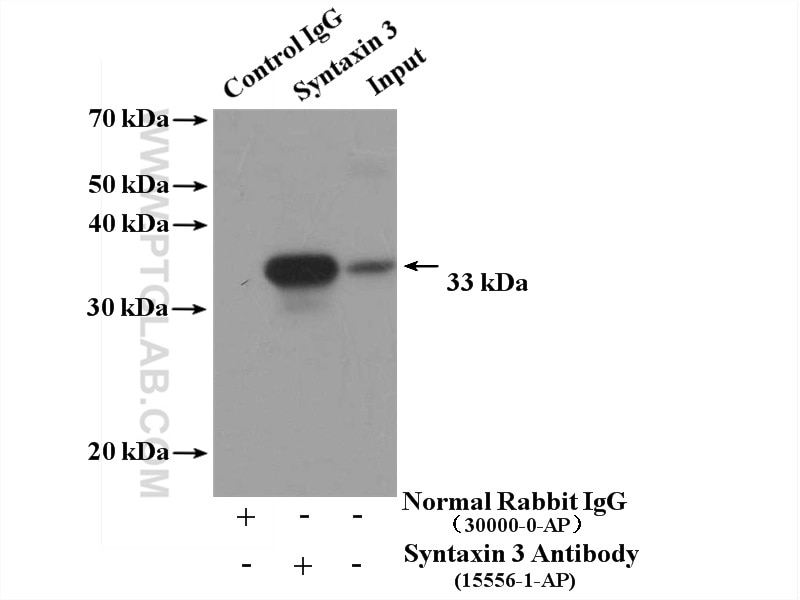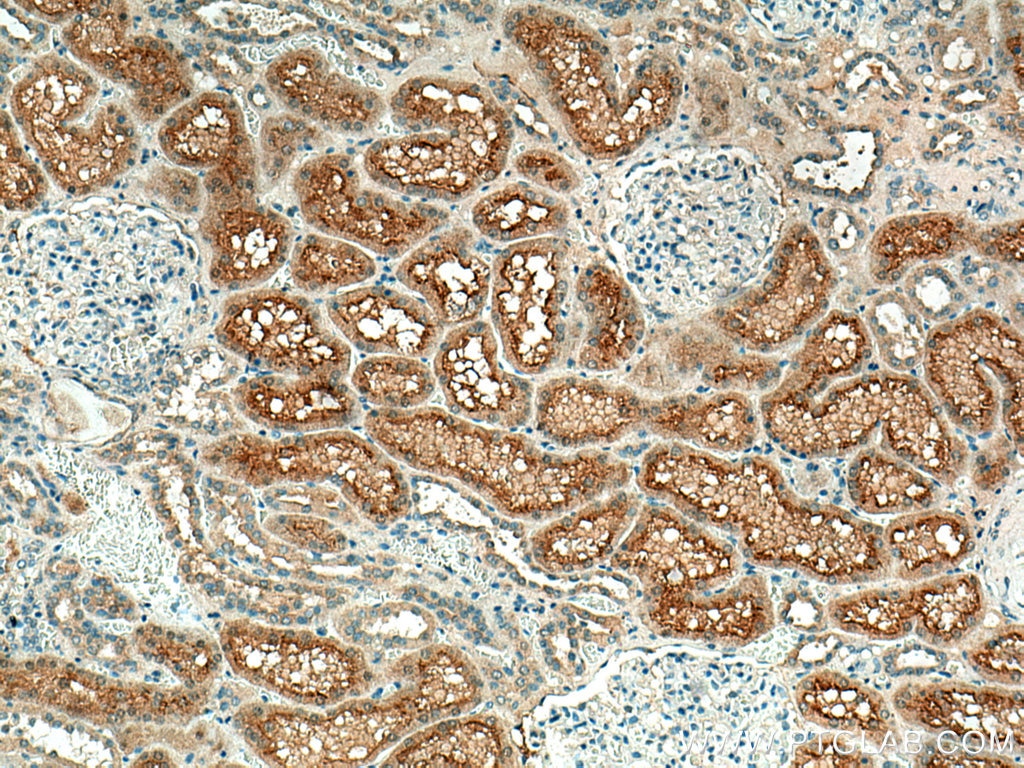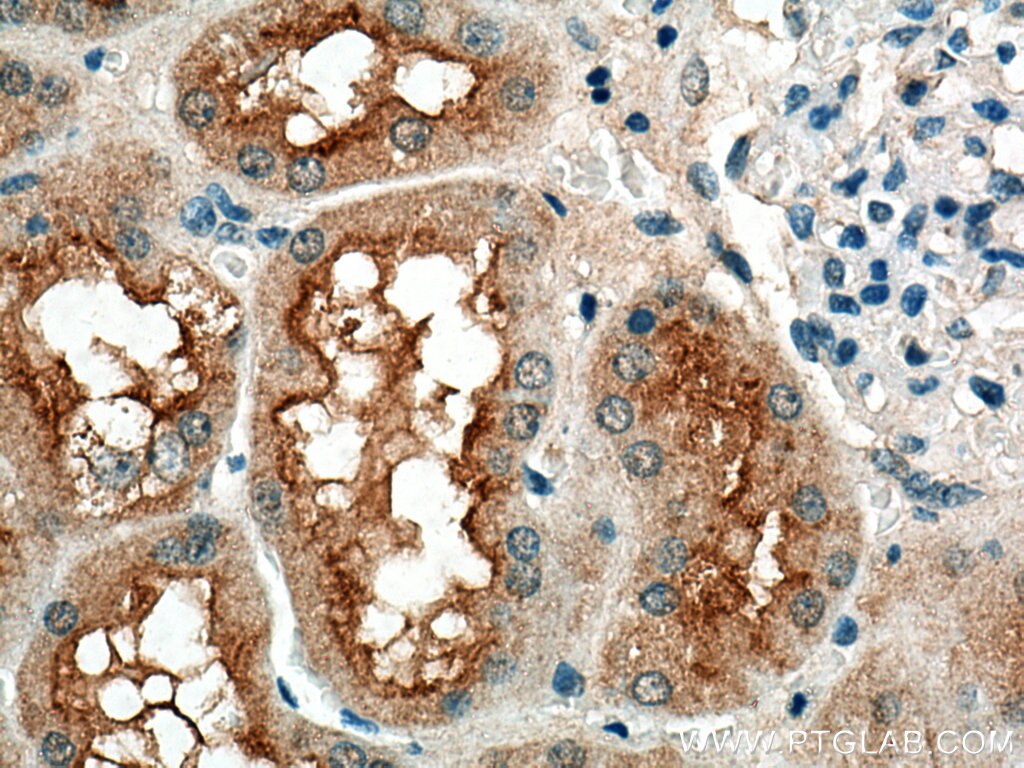Anticorps Polyclonal de lapin anti-Syntaxin 3
Syntaxin 3 Polyclonal Antibody for WB, IHC, IP, ELISA
Hôte / Isotype
Lapin / IgG
Réactivité testée
Humain, rat, souris
Applications
WB, IHC, IF, IP, ELISA
Conjugaison
Non conjugué
N° de cat : 15556-1-AP
Synonymes
Galerie de données de validation
Applications testées
| Résultats positifs en WB | cellules SH-SY5Y, cellules Neuro-2a, tissu plasmatique humain |
| Résultats positifs en IP | cellules SH-SY5Y |
| Résultats positifs en IHC | tissu rénal humain, il est suggéré de démasquer l'antigène avec un tampon de TE buffer pH 9.0; (*) À défaut, 'le démasquage de l'antigène peut être 'effectué avec un tampon citrate pH 6,0. |
Dilution recommandée
| Application | Dilution |
|---|---|
| Western Blot (WB) | WB : 1:500-1:2000 |
| Immunoprécipitation (IP) | IP : 0.5-4.0 ug for 1.0-3.0 mg of total protein lysate |
| Immunohistochimie (IHC) | IHC : 1:50-1:500 |
| It is recommended that this reagent should be titrated in each testing system to obtain optimal results. | |
| Sample-dependent, check data in validation data gallery | |
Applications publiées
| WB | See 12 publications below |
| IHC | See 2 publications below |
| IF | See 8 publications below |
| IP | See 3 publications below |
Informations sur le produit
15556-1-AP cible Syntaxin 3 dans les applications de WB, IHC, IF, IP, ELISA et montre une réactivité avec des échantillons Humain, rat, souris
| Réactivité | Humain, rat, souris |
| Réactivité citée | rat, Humain, souris |
| Hôte / Isotype | Lapin / IgG |
| Clonalité | Polyclonal |
| Type | Anticorps |
| Immunogène | Syntaxin 3 Protéine recombinante Ag7925 |
| Nom complet | syntaxin 3 |
| Masse moléculaire calculée | 33 kDa |
| Poids moléculaire observé | 33 kDa |
| Numéro d’acquisition GenBank | BC007405 |
| Symbole du gène | STX3 |
| Identification du gène (NCBI) | 6809 |
| Conjugaison | Non conjugué |
| Forme | Liquide |
| Méthode de purification | Purification par affinité contre l'antigène |
| Tampon de stockage | PBS with 0.02% sodium azide and 50% glycerol |
| Conditions de stockage | Stocker à -20°C. Stable pendant un an après l'expédition. L'aliquotage n'est pas nécessaire pour le stockage à -20oC Les 20ul contiennent 0,1% de BSA. |
Informations générales
Syntaxin-3 (also known as STX3) is a member of the syntaxin. Syntaxin-3 is a significant apical targeting protein in the epithelial membrane and in exocytosis process; it also acts as a vesicle transporter by cellular receptor in neutrophils, which is crucial for protein trafficking event (PMID: 25630102). It has been reported that syntaxin-3 has an important role in the growth of neurites, and serves as a direct target for omega-6 arachidonic acid (PMID: 1659826).
Protocole
| Product Specific Protocols | |
|---|---|
| WB protocol for Syntaxin 3 antibody 15556-1-AP | Download protocol |
| IHC protocol for Syntaxin 3 antibody 15556-1-AP | Download protocol |
| IP protocol for Syntaxin 3 antibody 15556-1-AP | Download protocol |
| Standard Protocols | |
|---|---|
| Click here to view our Standard Protocols |
Publications
| Species | Application | Title |
|---|---|---|
Proc Natl Acad Sci U S A Accumulation of non-outer segment proteins in the outer segment underlies photoreceptor degeneration in Bardet-Biedl syndrome. | ||
Mol Ther circMRPS35 promotes malignant progression and cisplatin resistance in hepatocellular carcinoma | ||
PLoS Genet BBSome function is required for both the morphogenesis and maintenance of the photoreceptor outer segment. | ||
Hum Mol Genet Photoreceptor cilia, in contrast to primary cilia, grant entry to a partially assembled BBSome. | ||
Front Mol Neurosci Farnesylation of the Transducin G Protein Gamma Subunit Is a Prerequisite for Its Ciliary Targeting in Rod Photoreceptors. | ||
J Biol Chem Glia Maturation Factor-γ Regulates Monocyte Migration through Modulation of β1-Integrin. |
